Who doesn’t love it when a vibrant Northern Cardinal visits your feeder? Bright, beautiful, and rich in symbolic meaning, the cardinal is a perennial favorite for birders east of the Rocky Mountains.
Although Northern Cardinals are fairly common backyard birds, depending on the geography of your area, the layout of your yard, or just plain old luck, attracting them might be trickier for you. Fortunately, there are plenty of things you can do to make your yard more attractive to cardinals.
And attracting these birds is totally worth the effort. Take it from a West Coast-dweller who misses her backyard buddies in Central Texas. Cardinals don’t migrate and their plumage remains bright and colorful all year (though they do look a bit scruffy when molting), so drawing cardinals into your yard can be a really rewarding investment.
1. Use Cardinal-friendly Feeders
Maybe you’re buying a feed mix that cardinals are supposed to love, but they still aren’t frequenting your feeder. Like humans, birds have preferences about a lot of different things. A feeder needs to be comfortable and accommodating for them. Cardinals won’t always use just any feeder, even if it contains their favorite food. As a medium-sized bird, they prefer feeders big enough and solid enough for them to sit, perch, and, most importantly, feed facing forward.
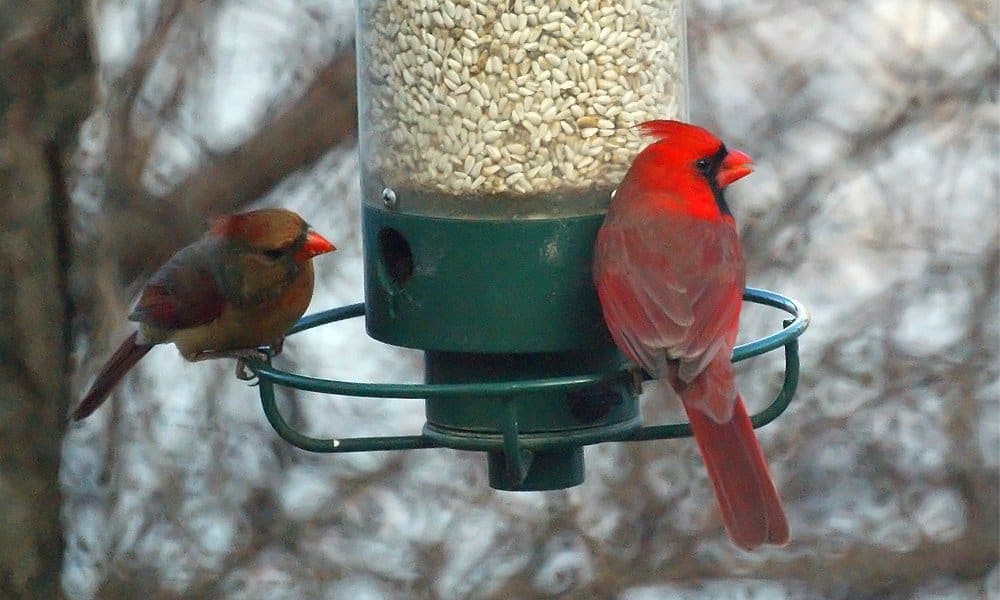
It’s for this reason you’ll find them using hoppers over tube feeders – where they can’t twist their body enough to access the feed and the pegs may not support them. Set out a variety of feeders to find which ones your cardinals like best, but be sure to include hoppers, trays, and platform feeders filled with cardinal-approved snacks.
You may even find that the cardinals in your yard are totally fine using tube or platform feeders. Part of the joy of attracting birds is learning what works for you and catering to your local bird population.
2. Tempt With The Right Treats
We may have put the cart before the horse by starting off with feeder design. Now you know how to make cardinals comfy in your garden, but how to attract cardinals? With the right treats, of course! Northern Cardinals will eat a variety of seeds, nuts, and even fruit. Their beak is sturdy and strong, well-adapted for husking and hulling seeds such as their favorite sunflower and safflower. Black-oil sunflower is one of the most popular feeds used for attracting cardinals and many other birds to your feeder.
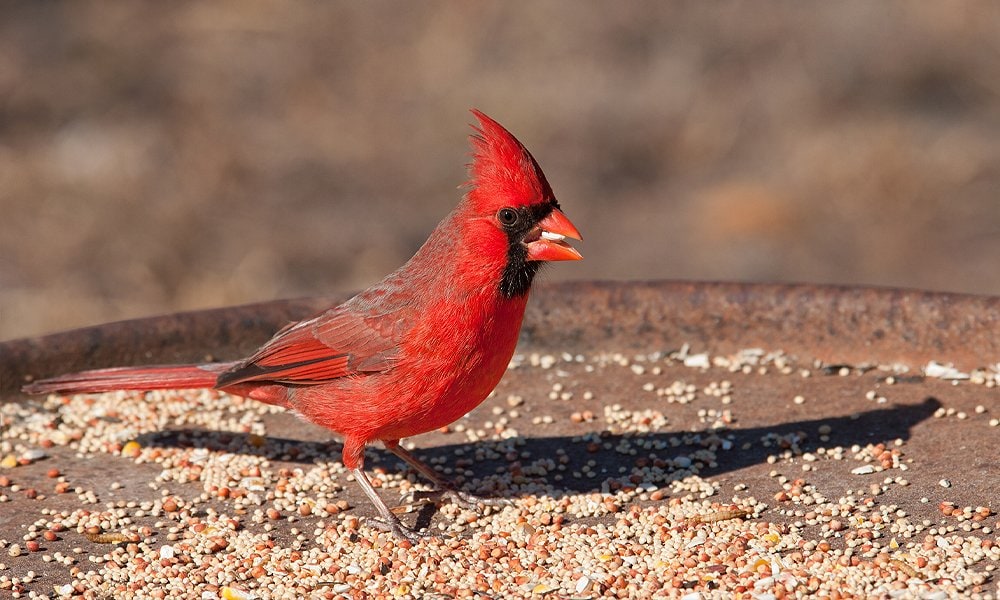
Another option is striped sunflower, which is bigger than black-oil and has a harder husk that the Northern Cardinal’s sturdy beak can easily crack. Safflower, a white seed often ignored by other birds and squirrels, is a favorite of the Cardinal and can be combined with sunflower seeds to create your own Cardinal specific blend. With their hearty beaks, Cardinals also love corn and shelled peanuts.
You can also try setting out small amounts of fruit or mealworms if you’d like to get creative with feeding your backyard guests. The best feed for Northern Cardinals is one that fits neatly into their diet, so variety is a plus!
3. Place Feeder In The Right Location
Feeder placement can often make or break the success of a birdfeeder. Birds, including cardinals, don’t like to venture into spaces that feel exposed or uncomfortable. Though they certainly don’t look or sound shy, cardinals are wary of being caught out in the open, so these birds prefer protective cover and will often favor a feeder that’s placed near vegetation.
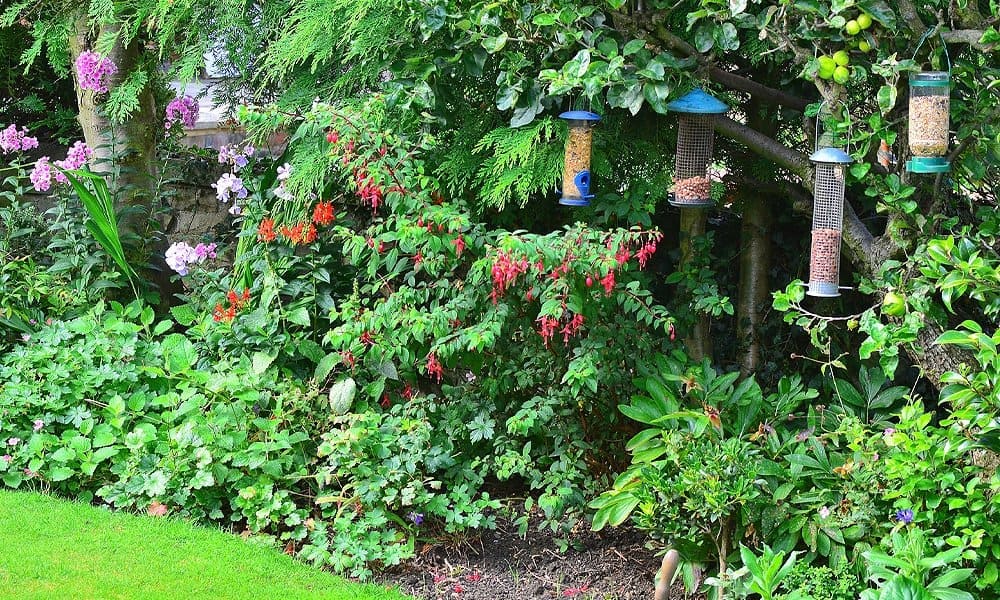
To attract cardinals, food sources should be placed near trees and shrubbery giving them both a place to hide from predators and a safe perch to check everything out before going in. Include multiple feeder locations at a variety of heights and proximity to encourage cardinals to come to your yard. Give them plenty of places to hide and take cover and don’t forget to include ground-feeding locations.
It’s worth noting that cats sometimes use thick shrubbery as cover for hunting birds at feeders. Make sure your feeder provides cover without being so close to dense shrubbery that birds can’t escape when Fluffy pounces. And, as always, limit your cats’ access to wild birds for everyone’s sake.
4. Offer a Water Source (Preferably Moving)
Another essential tip on how to attract cardinals to your garden is to install some kind of water source. Often overlooked (especially in winter), water sources are essential to cardinals and many other birds. Seasoned feeder watchers will tell you that it’s often the birdbath, rather than the feeder, that attracts the most interesting foot (or wing) traffic.
Like most mammals and birds, Northern Cardinals need to drink every day and providing a reliable water source is just one more way you can make your yard more attractive and hospitable. Just be sure to provide fresh water daily and clean your birdbath often to avoid bacteria or algae growth, not to mention those dreaded mosquito eggs.
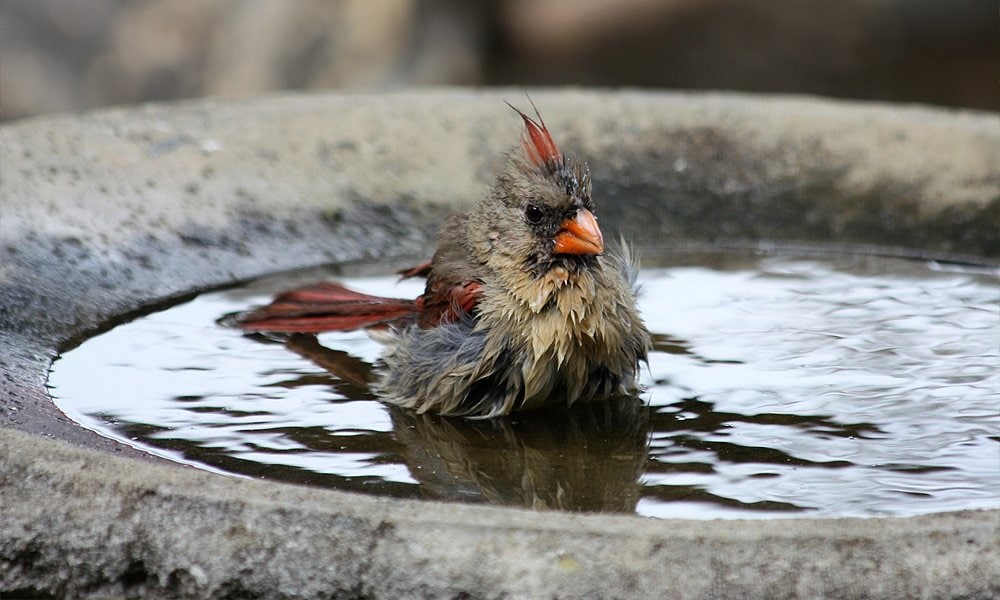
Adding a small stick or two to your birdbath can help make your birdbath more comfortable to cardinals and any other birds that may visit. Birds always appreciate having a variety of surfaces to perch on.
Because of their size, standard-sized bird baths (think 2-3 inches) are usually the best fit. Adding a dripper, a bubbler, or a mister is a great way to attract attention and turn your standing water source into an eye-catching moving water feature that’s more in line with what birds prefer.
You can try both elevated birdbaths and ground birdbaths to test what your local cardinals like best. I’m a fan of classic pedestal birdbaths, but ground baths can be great for making timid birds comfortable.
5. Keep Your Feeders Full at All Times
The great thing about cardinals is that cardinals don’t migrate and will stick around all year, meaning they will potentially make use of your feeders no matter the season.
Being a bird is hard work and takes a lot of calories for such tiny bodies. Birds learn to appreciate a steady food source. Keep your feeders stocked and the cardinals in your neighborhood will learn that your yard is a consistent spot to chow down year-round.
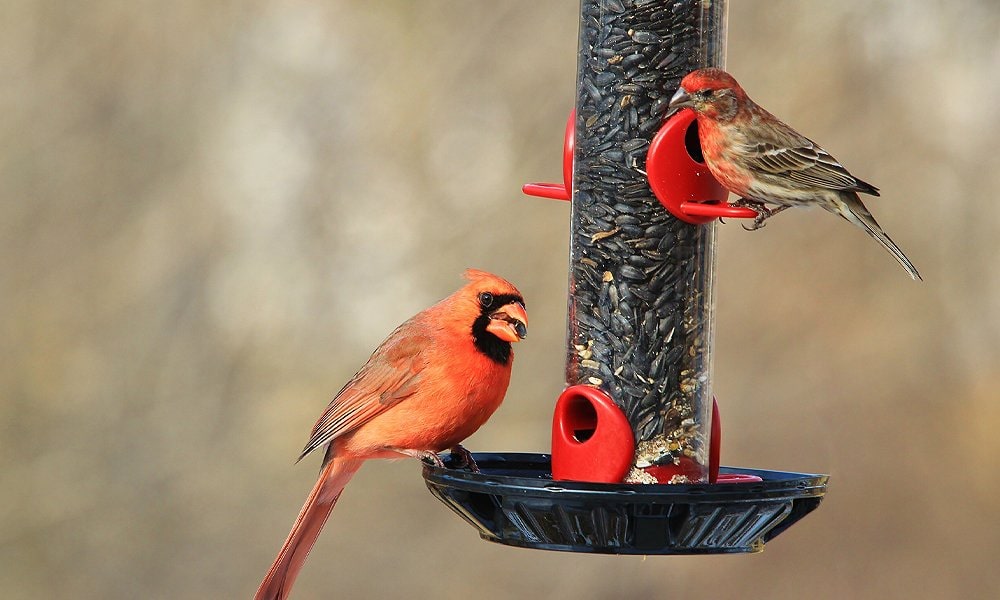
Often the first and last visitor to your feeder each day, a well-stocked reliable food source can even attract a group of cardinals, known as a radiance, a college, a conclave or a Vatican.
6. Encourage Ground-feeding for Variety & Security
In addition to sturdy feeders, give your cardinals ample opportunity for ground feeding as well. Not only does it give them a sense of security, especially with bushes or shrubs nearby, but leaving fallen seed on the ground for a few days can also encourage more Northern Cardinals to visit.
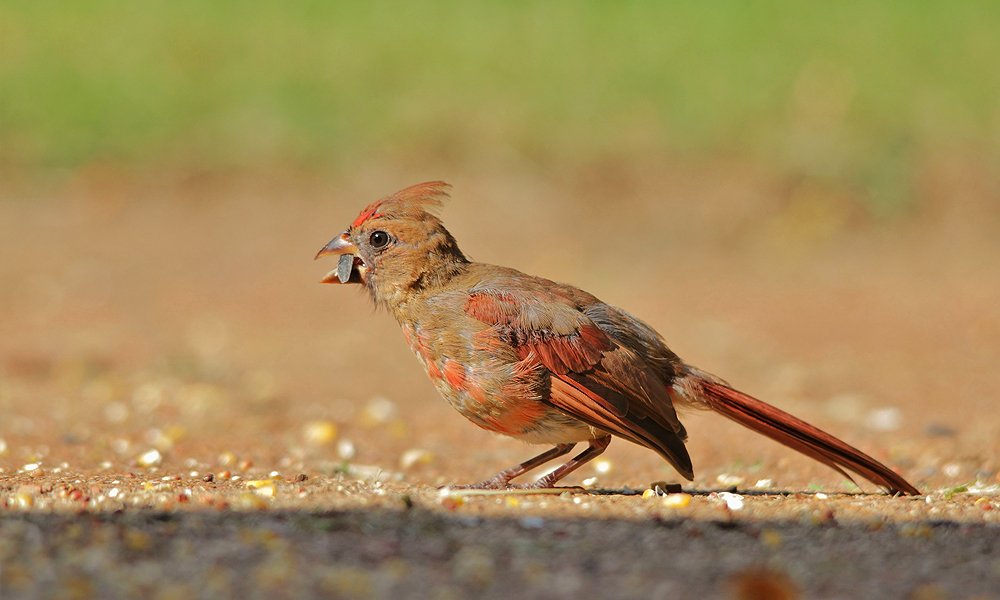
Place a tray, mesh net, or platform beneath hanging feeders to give cardinals a better space to feed. As mentioned, feeders with narrow perches are less than ideal for the medium-sized cardinal, attach a tray to the bottom of tube feeders to give Cardinals a place to land and eat too.
7. Offer Protective Shelter
Cardinals are very private birds that enjoy secluded areas, dense with growth, and lots of trees and shrubs. Planting trees and bushes of varying heights will help these songbirds feel safe and protected. I’ve found cedar bushes and trees to be particularly attractive to Cardinals, providing dense greenery and cover during the sparser winter months as well.
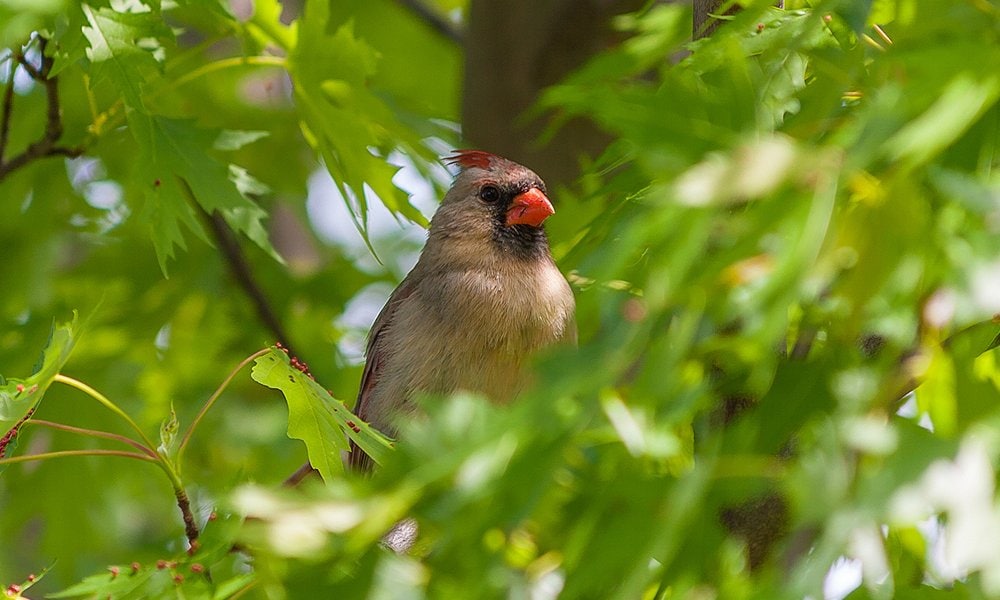
To give your birds as much coverage as possible, be sure to include the six basic layers: large trees, small trees, large shrubs, small shrubs, perennials, and ground cover. Not only will they appreciate the privacy and safety, but you’ll be providing much-needed shelter and nesting material too.
Bonus points if you stick with native plants and bonus bonus points for planting fruiting trees and berries that act as natural “feeders” for your backyard cardinals.
8. Provide Nesting Material
Northern Cardinals rarely use birdhouses (but they do use nesting shelves), preferring to nest in dense shrubbery or greens. This is another great reason to consider planting thick greenery that they can use.
A great way to attract nesting birds to your yard is to offer them a variety of nesting materials. Traditional advice would tell you to leave out hair or yarn for the birds. This is no longer recommended as birds can become tangled in nesting materials laid out by humans. Instead, provide a natural landscape rich in native plants and grasses. Trust me, the cardinals will know what to do!
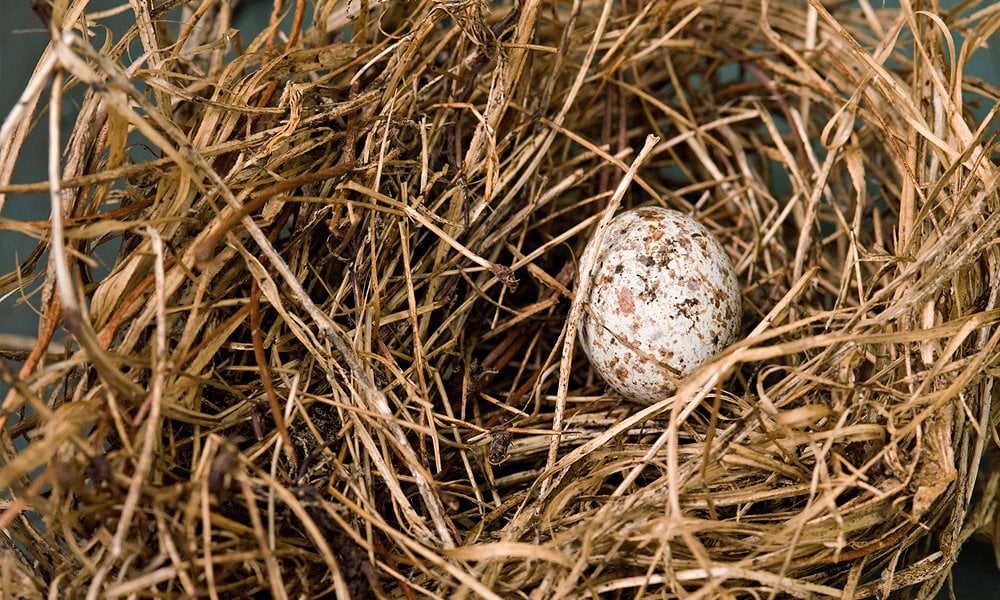
Cardinals can have several broods per year but rarely reuse a nest. Offering a yard rich in natural nesting material is a small touch that can keep cardinals coming to your yard all year long.
9. Prevent Frozen Water
During those colder months, heated bird baths are essential for providing winter water. Still, water should be frequently refreshed to avoid freezing, or a heated bird bath should be used to prevent freezing on even the coldest of days.
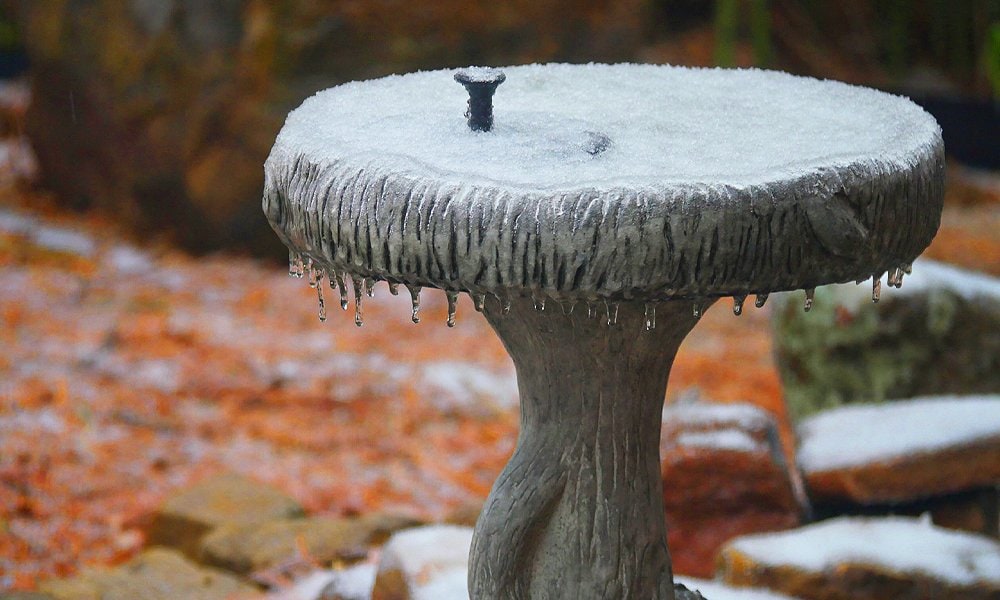
Heated baths usually come in two styles (basin or immersion), and both are useful in providing liquid water for backyard birds. Just be sure to leave some sticks in the water for perching.
It isn’t good for birds to bathe in frigid temperatures, as their wet wings can later cause issues in the cold, instead, your bath in winter should simply give them a source of drinking water that they can safely perch over without getting too wet.
10. Remove Reflective Surfaces
Northern Cardinals are territorial birds, and when aggressive hormones are at their peak, these birds can spend many hours defending their territory against unwelcome intruders.
Unfortunately, they will attack their own reflection seen in a window, car mirror, or even a shiny bumper if they feel threatened. While the birds aren’t typically grievously injured by this behavior, these fights can last hours or days and may case beak damage or unnecessary stress.

Avoid reflective surfaces such as mirrors or gazing balls and use techniques to minimize agitation on surfaces that can’t be avoided, like large windows. The same methods used to prevent bird-window collisions can work to stop birds from attacking windows. Examples include covering car mirrors with something opaque (like a plastic bag) and using netting or decals on windows.
11. Avoid Predator-Accessible Feeding Areas
Northern Cardinals are very shy birds and every unexpected movement can scare them away. Keep outdoor pets away from feeding areas if you can.
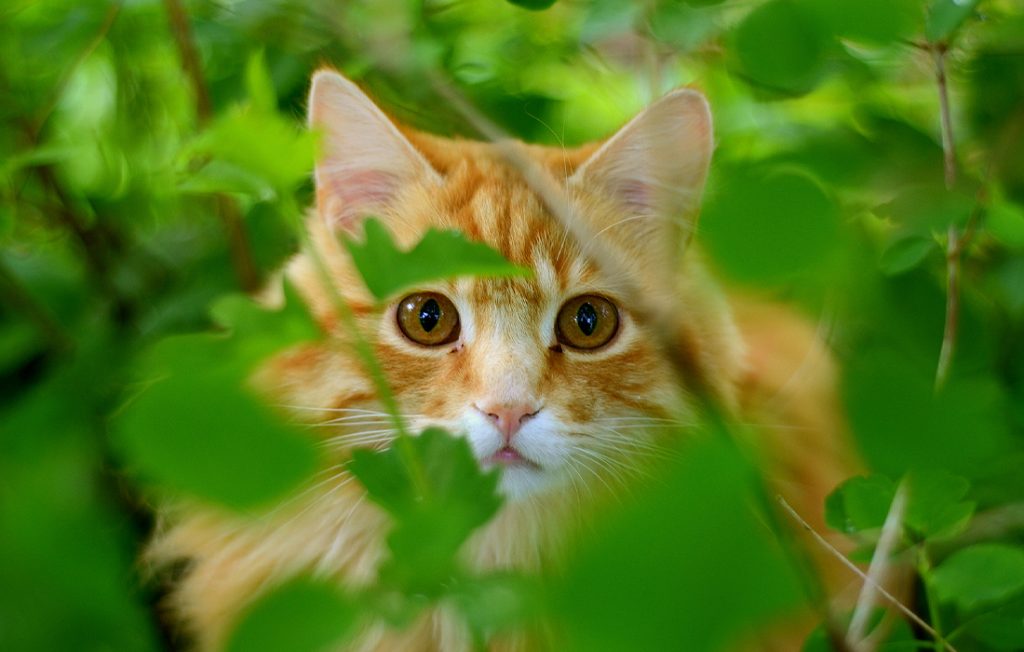
Although low shrubs and bushes give them ample protection, avoid scattering seed or placing feeders too near these bushes. As mentioned above, these shrubs also give predators the perfect place to hide and easily attack your birds.
If you currently have an outdoor cat, consider moving them indoors. Indoor cats tend to live longer and the birds will thank you for it. You can even try an outdoor cat enclosure or “catio” to give your cats some bird-approved vitamin D!
12. Keep the Feeders Clean
One of the most important tips to attract cardinals to your feeder is to provide the safest feeding environment possible. This includes keeping your feeder clean and clear of mold, mildew, or anything else that has accumulated. Feeders can become messy places and, if not cleaned regularly, quickly become breeding grounds for disease and bacteria.
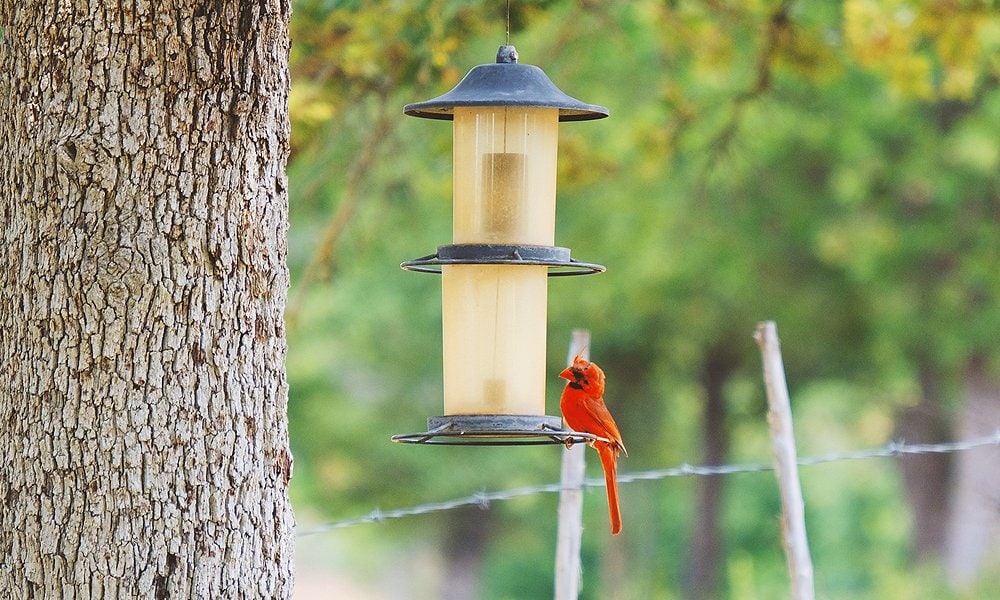
Feeders should be cleaned approximately every two weeks, more often during heavy use or poor conditions, to prevent the spread of avian diseases. Use mild dish soap and hot water, or a 1:9 bleach solution and then allow to dry before refilling it.
Always pay attention to announcements from local wildlife organizations regarding avian health concerns. Birds experience disease outbreaks just like humans do, so be prepared to take down your feeders when local organizations recommend it.
Final Thoughts
I hope this guide has helped you and that your garden will be swarming with bright red cardinals in no time. If you have any questions or suggestions, leave them in the comments below and I will do my best to get back to you!

